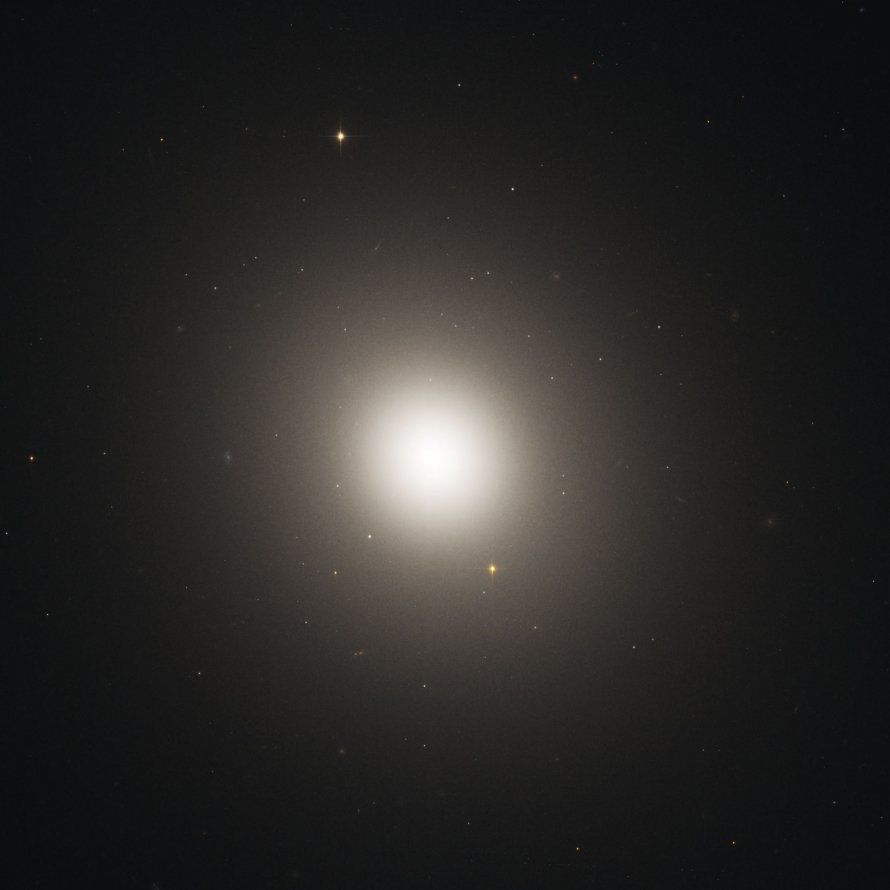M105 (NGC 3379)
Messier 105 (NGC 3379) is an elliptical galaxy located in the constellation Leo in the Leo I Group of galaxies. M105 is 36600000 light years away from Earth.
M105 is best viewed during early spring, is magnitude 10.2, and can be viewed with small telescope. M105 is 5.4' x 4.8' in apparent size. For reference, the full moon is 30'.
Observing difficulty: Hard
- Name:
- Type:
- elliptical galaxy
- Constellation:
- Leo
- NGC or IC:
- NGC 3379
- Magnitude:
- 10.2
- Viewing:
- small telescope
- Size:
- 5.4' x 4.8'
- Distance (light years):
- 36600000 LY
- RA:
- 10h 47.8m
- Dec:
- 12 35'
- Season:
- early spring
- Galaxy group:
- Leo I Group
- Messier Marathon #:
- 31
* The naked eye can see up to magnitude ~7-8 objects under ideal dark sky conditions.
A Glimpse into an Elliptical Galaxy
Messier 105, also known as M105, is a large elliptical galaxy situated in the constellation Leo. First discovered by Pierre M?chain in 1781, it was later added to Charles Messier's catalogue by Helen Sawyer Hogg in 1947. M105 is part of the famous Leo I or M96 group, which is a collection of galaxies located in the heart of the Leo constellation.
Physical Characteristics of Messier 105
M105 is an elliptical galaxy with an almost spherical shape and a relatively smooth, featureless light profile. This lack of structure is typical of elliptical galaxies, which have used up or lost most of their interstellar medium and thus have a significantly lower rate of new star formation compared to spiral galaxies. Instead, M105 is populated by older, low-mass stars, giving the galaxy a yellowish hue.
The most intriguing aspect of M105 is the supermassive black hole that resides at its center. This black hole, one of the first to be detected in any galaxy, is estimated to be 200 million times the mass of our Sun. The existence of such a massive black hole influences the motion of stars in the galaxy's core, causing them to move at higher velocities than stars farther out.
Magnitude and Distance
Located about 32 million light-years away from Earth, M105 has an apparent magnitude of 9.3. This places it at the limit of visibility for smaller backyard telescopes under dark skies, and its light is more evenly distributed than that of spiral galaxies, which can make it a bit challenging to observe.
Finding and Observing Messier 105
The constellation Leo, in which M105 resides, is easy to spot as it is one of the zodiac constellations that lie along the ecliptic. To find M105, locate the backwards question mark pattern of Leo known as the Sickle, which represents the head and mane of the Lion. M105 is found south-east of the star Regulus, which forms the base of the Sickle.
In the Northern Hemisphere, Leo and hence M105 are best viewed in spring. For observers in the Southern Hemisphere, the optimal viewing period is during the autumn months. Because of its apparent magnitude, M105 is best observed using a medium-sized telescope under clear, dark skies.
Despite its relatively low brightness, M105 is an interesting target for amateur astronomers due to its supermassive black hole and its membership in the Leo I group. Observing M105 and its nearby galaxies can provide a glimpse into the diverse structures and histories of galaxies in our universe.



